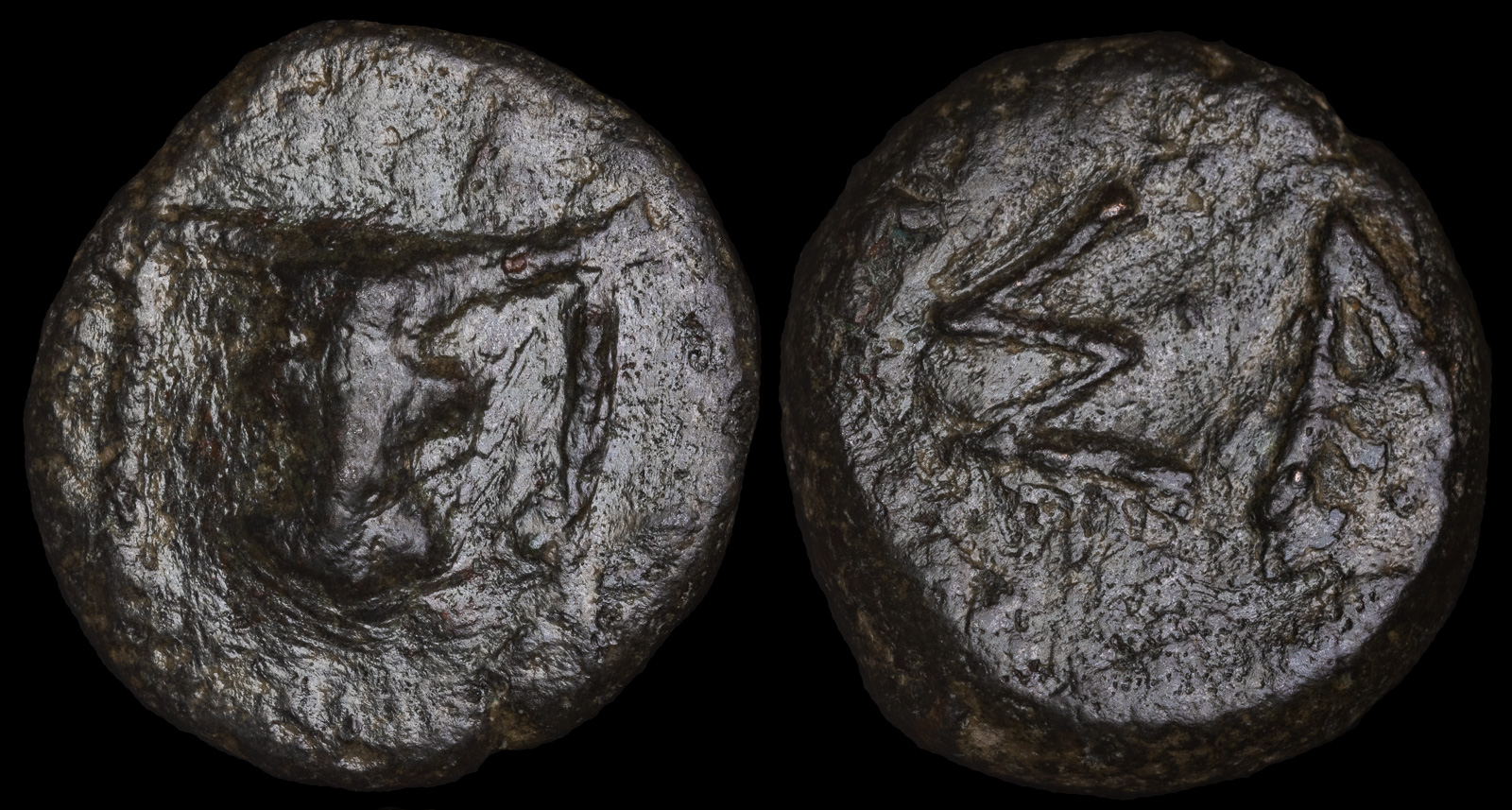
Islands off Elis, Same
circa 370-189 BCE
Æ 15 mm, 2,69 g
Filletedbull’s head facing / ΣΑ.
HGC 6, 204
Some time ago, I was perusing coins online when I noticed this one from a place called “Kefalonia”.
Until then, I’d never heard of Kephallenia, let alone a city called Pale. After a bit more research, I learned that there were four principal cities of Kephallenia, whose ancient population is believed to be higher than today’s.
Fast forward some time later, and I was looking for interesting Greek islands for our trip when I noticed a place called “Kephallenia” pop up. Hmmm….where had I heard that name? Of course! So, after some negotiations with my wife, we settled on a trip with Kephallenia (also spelled Kefalonia) at the end. It was certainly very different from Mykonos and Santorini, the other two islands we visited.
This is where we stayed, a small town called Asos.
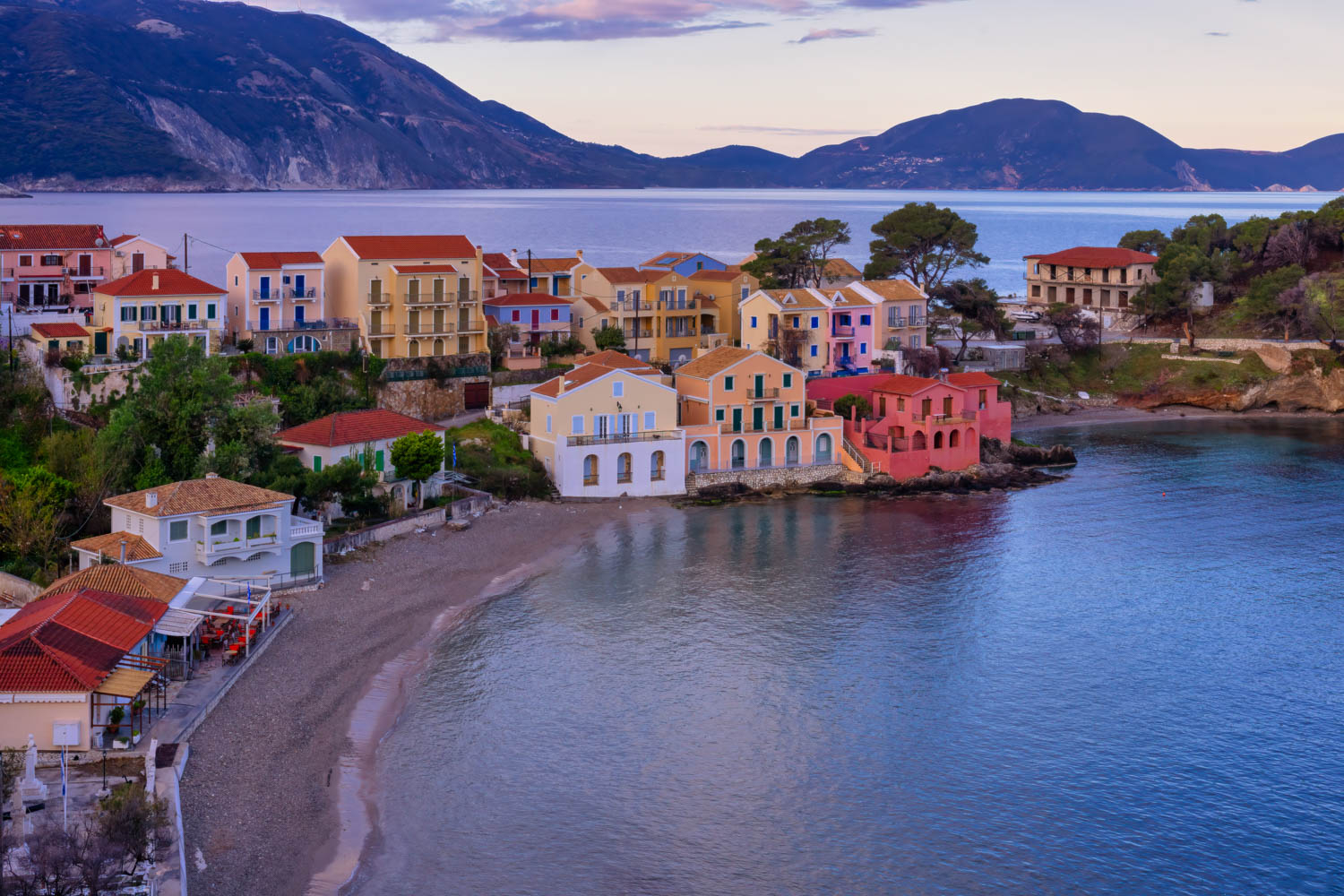
This was the view from our room.

This is the spot the island is most famous for – Melissani Cave. During the summer you might wait an hour or two in line, but because we visited in April we just walked in.
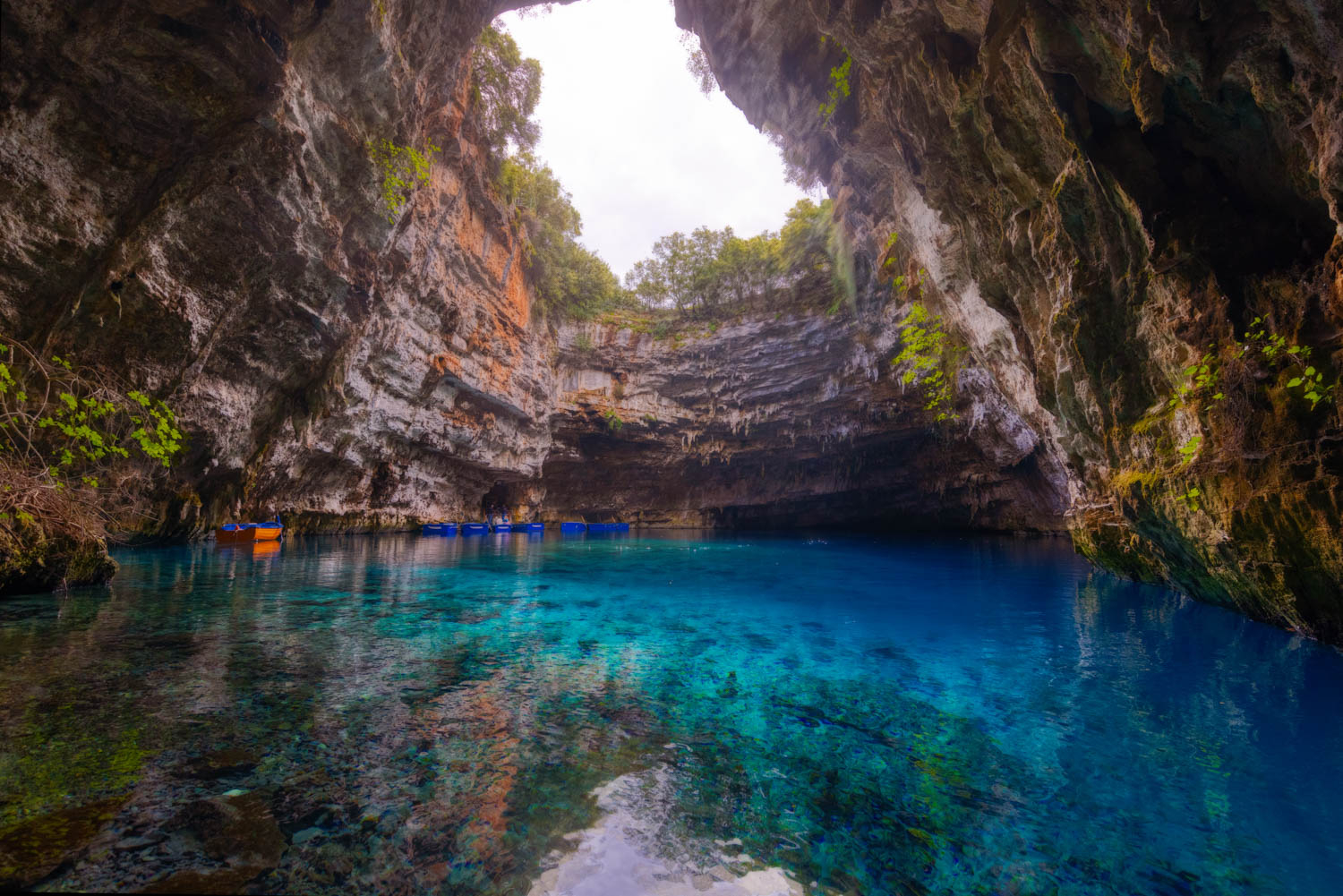
This is the island’s most famous beach (and it has many) – called Myrtos Beach. It is absolutely stunning and we had the opportunity to spend more time with it because our car broke down at this spot when rats chewed some cables near the engine.
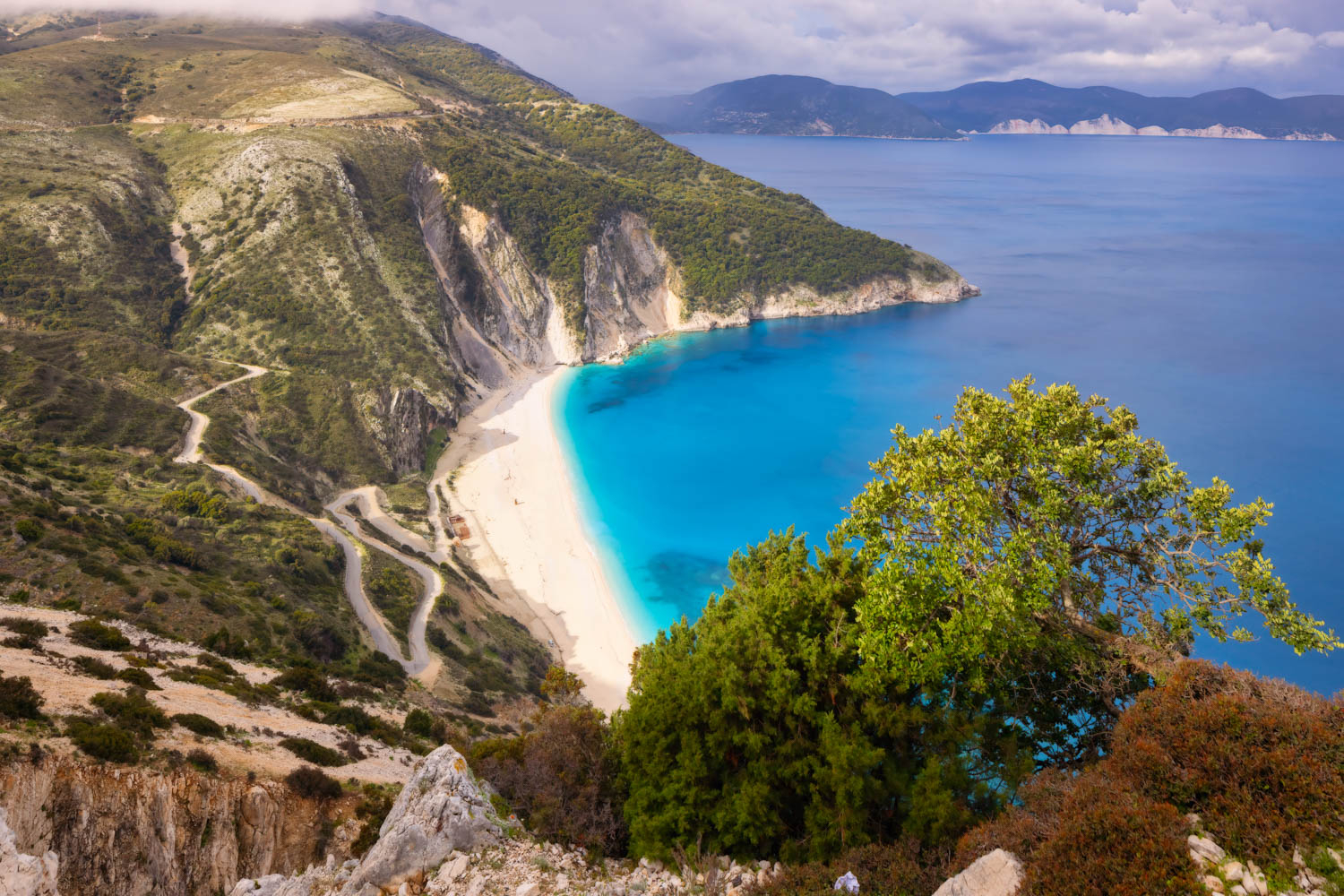
Of course, after spending some time viewing the sites, I couldn’t resist noticing a sign in the modern city of Same saying “to the acropolis.” I knew that Same was one of the four ancient cities, so I couldn’t resist taking a look.
The road went on for some time and at one point I had to stop to check the GPS just to make sure we were heading to the right spot. Finally we arrived where we saw lots of ruins and there was no one there!
Well, almost no one. We then spotted a car as we wandered around and met a nice older man who had moved to Kefalonia from the UK roughly twenty years earlier. His major passion was the history of Same and he offered to take us through the ruins. Of course we couldn’t refuse.
Here’s one of the gates into the city.

Although archeologists have spent some time at the ruins, they’re nowhere near as organized as the more well-known sites. That’s a shame because there appear to be enough raw materials to do an impressive job. The ancient city is also massive – requiring a drive to get from one end to another.
Here’s a cool-looking tree growing on some ruins.

And here are part of the city walls viewed from a distance. It was a very different tour than others because our guide showed us interesting things such as turning over a pottery fragment and showing us how there were still traces of oil after all these years. It certainly required a lot of imagination to envision what the city had been, but the entire place just seemed more “living and breathing” than many other ruins I’d visited.

Not long ago, I noticed a coin from Same up at auction. I put in what I thought was a high bid for it, but when someone outdid me I just had too many happy memories of walking through the ruins, so I paid too much for the coin and won it.
According to our guide, Same had 70,000 people around the time that this was minted, which is twice the island’s current population (and there were three other major cities). However, IMHO this figure is too high, although from the size of the ruins it must have had a high population.
The island used to have nearly double its current population, but a series of earthquakes scared many away. There are still quite a few “modern ruins” like this one across the island.
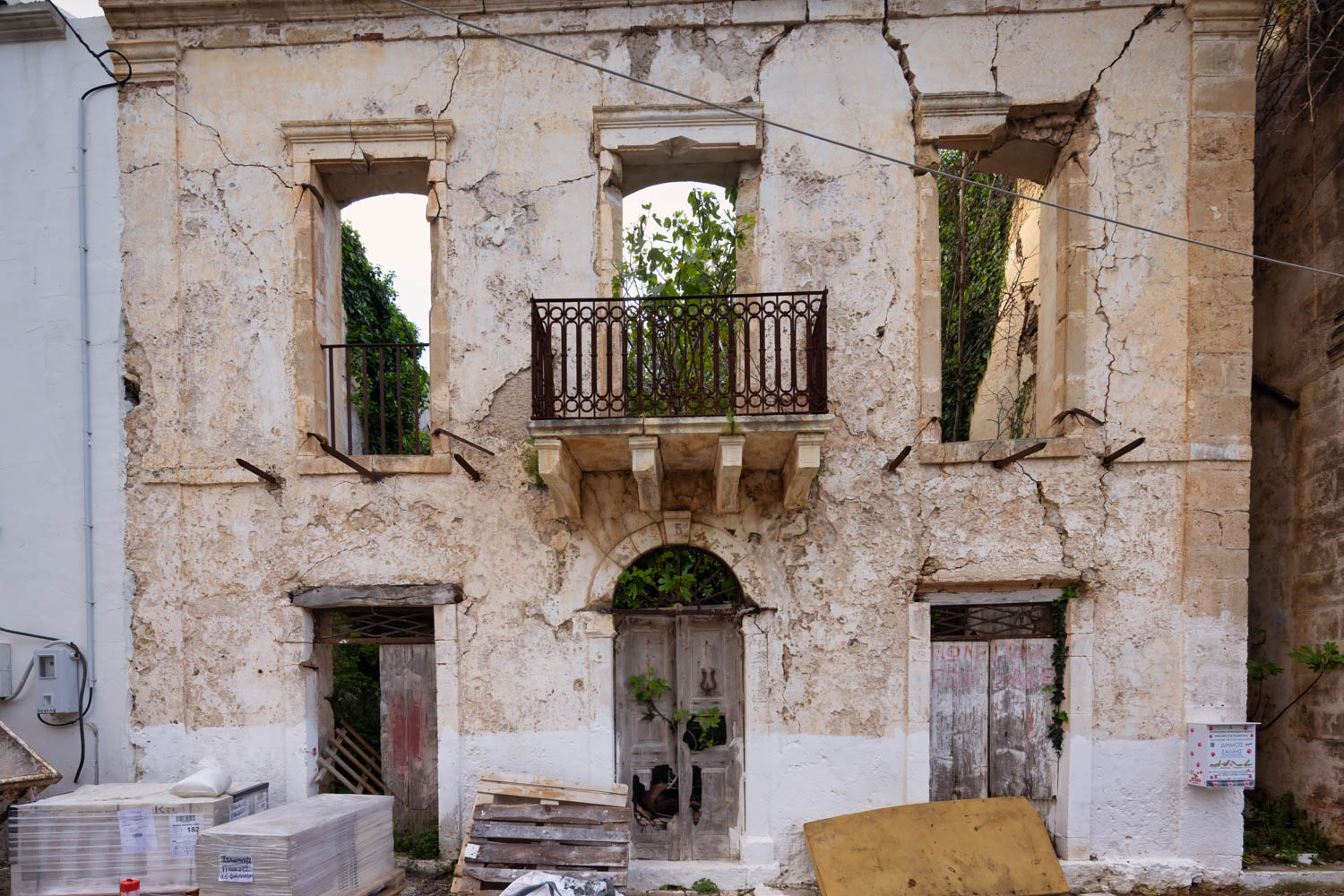
Today, most tourists get as far as Argostoli, which is the only port on Kefalonia for cruise ships (though Same accepts passenger ferries). It’s a rather uninteresting town IMHO, but it does sport sea turtles that you can see from shore.
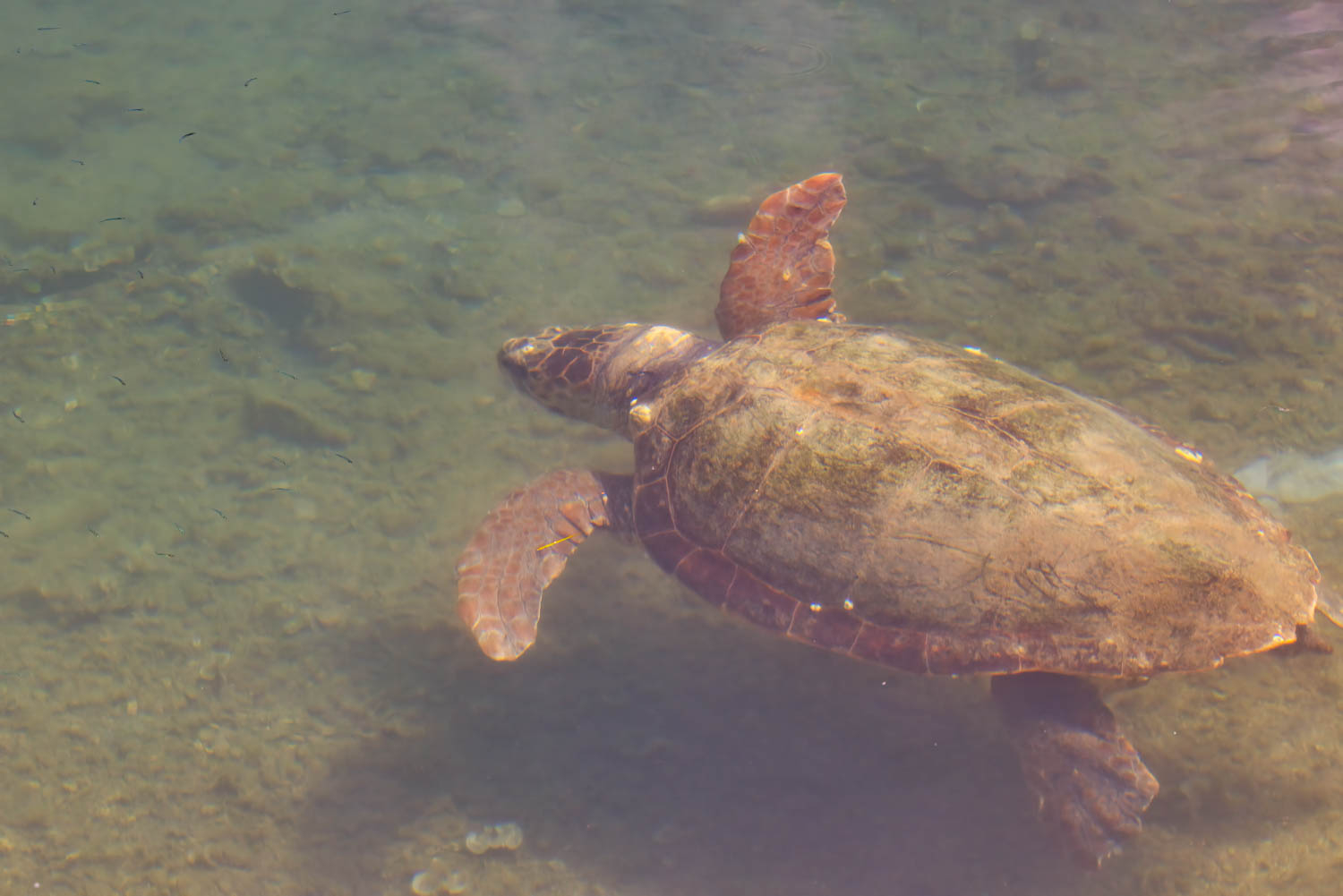
Finally, the island of Kefalonia has another extremely interesting bit of history – modern scholars are divided over whether Homer’s Ithaca was really Ithaca or in fact Kefalonia.
For some time, the major concern here is that Homer’s Ithaca bears little resemblance to the island of the same name. However, his description does match Kefalonia.
Recent research from a scholar named Brittlestone has proven that the Paliki Peninsula on Kefalonia – which I sadly didn’t have time to visit – was once a separate island. Within the last three thousand years the land between them has risen and, when you add the descriptive details, the Paliki Peninsula would probably be identified as ancient Ithaka today if the modern-day Ithaka tourism board didn’t have a say. To top it off, numerous Mycenaean-era structures have been found across Kefalonia, including in Paliki. Some uncovered so far are quite grand, though most are sadly off limits to tourists (they were open in years past but budget cuts closed them).
I’m certainly glad to accept this theory because I have a coin of Pale and not Ithaka.
In the end, I’m happy to have visited this island and remember it from my photos and two ancient coins (obviously NOT purchased in Greece).
The Athenian general Demosthenes takes aboard heavy infantry from Zakynthos and Kephallenia (likely including Same) and crosses over to the opposite coast of Akarnania to Alyzeia and Anaktorion, already held by Athens.
Same destroyed by Fulvius Nobilior.
April 17
The author of this page can’t find the ruins of Same, but is aided by his wife. There, they are guided by a nice man who lives in the area.